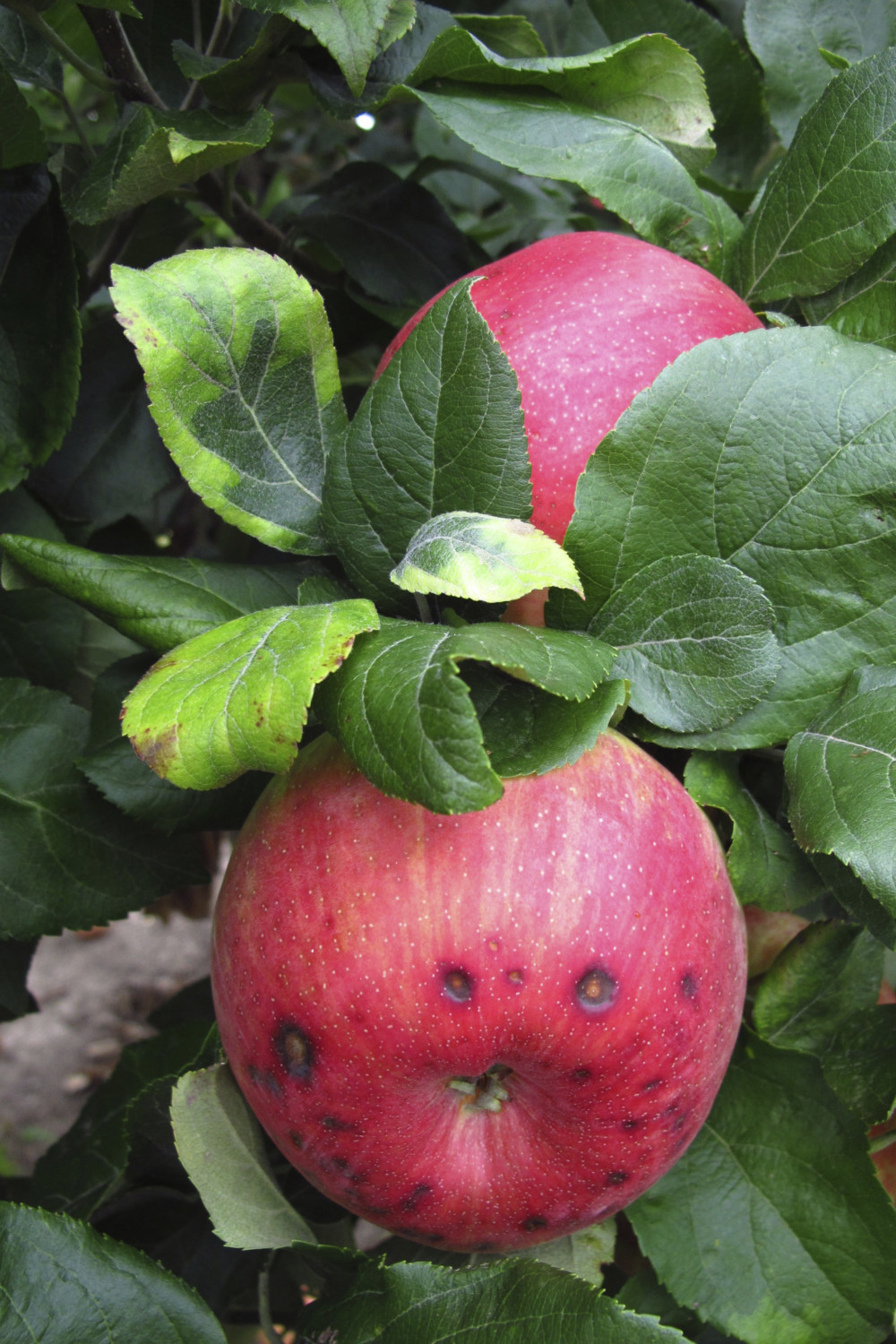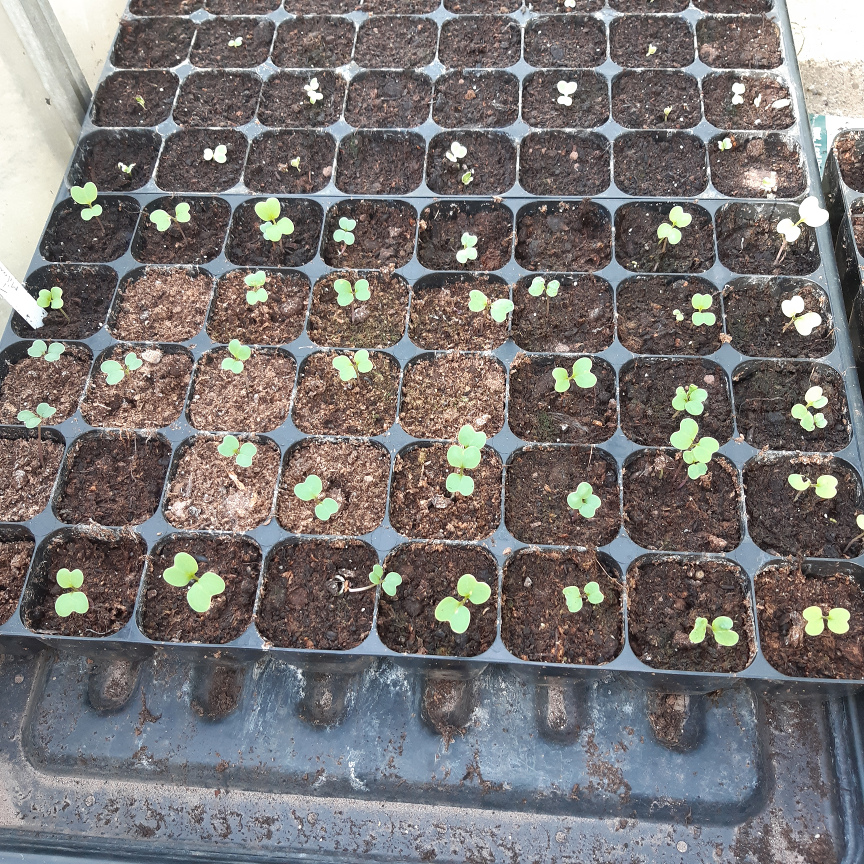The summer pruning of the apple trees I mentioned a week or two ago is well under way and indeed the harvest of the earliest apples from the variety ‘Katy’ has already started – ripening a good 10 days before expected on account of the good weather earlier in the summer no doubt. ‘Katy’ is an early, juicy variety – a cross between Worcester Pearmain and James Grieve but also one of the varieties which is rather susceptible to a disorder called “Bitter Pit”

The term was first used in the 19th century and the problem is seen as brown, spotty discolourations in the flesh beneath uneven blotches on the fruit skin. These may be shallow at first and easily peeled away with the skin but may become more pronounced in storage. It was not until the 1960s that research revealed that this problem was due to calcium deficiency and all sorts of remedies have been tried over the years – spraying the trees with calcium chloride or calcium nitrate during the growing season or, in the case of commercial growers in Australia and New Zealand, dipping the fruit in calcium chloride solution and rinsing in water after 36 hours. Just think of that when you take a bite into your next supermarket apple! For the small scale grower, good horticultural practices are best; no artificial fertilisers to disturb the natural mineral balance of the soil and a steady supply of water during the growing season seems to be most important factor as the take-up of calcium by the tree is undoubtedly linked to this and we know that bitter pit is more pronounced in a dry season.
Elsewhere on the allotment, the summer rolls on and more crops are coming into their own. We have some superb Florence fennel at the moment. These were sown in modules in April and planted out when very small indeed. Conventional wisdom says you should always sow fennel in its growing site and never transplant it but experience shows this is not the case. Planting out as early as possible though is key to a successful crop. Not everything can be treated in the same way – fresh coriander which is very useful to have and can easily be grown on the allotment really does need to be sown where it is to grow. Any disturbance or attempt to transplant will almost certainly cause it to bolt sending up tall flowering shoots instead of the lush aromatic foliage we love.

I have never had great success with growing turnips and, like swede, some regard this crop as little better than cattle food. This is unfair. As long as they are harvested when no larger than a golf ball – they can be very tender and delicious. Again, these are sown in modules for planting out as soon as the second leaves start to show. We don’t immediately turnips with Indian food but they grow well in Kashmir and all over North India where they are cooked with lamb or even on their own with fresh coriander and mint. Madhur Jaffrey’s classic ‘Indian Cookery’ has a good recipe for this last dish which will be re-visited when we get around to the turnip harvest – assuming I have better success this year!

We have had one or two colder nights lately – a reminder that the summer is on the wane and the last sowing of autumn maturing crops should be in the ground. The seed packets can then be put away until late autumn when we’ll review what grew well and what didn’t and place an order for the next season, almost certainly trying some new crop as well as the old favourites.
from Madhur Jaffrey’s ‘Indian Cookery‘
Stir fry 12 oz tomatoes in vegetable oil for a couple of minutes before adding grated ginger, ground coriander, turmeric and cayenne pepper. When the sauce is thick and paste-like, add a couple of pounds of thickly sliced turnips, just less than a pint of water, fresh coriander, mint and some salt to taste. Cover the pot tightly and cook on low heat until the turnips are tender – about 10 minutes or so. Serve on its own with rice or bread or as an accompaniment to a lamb dish.